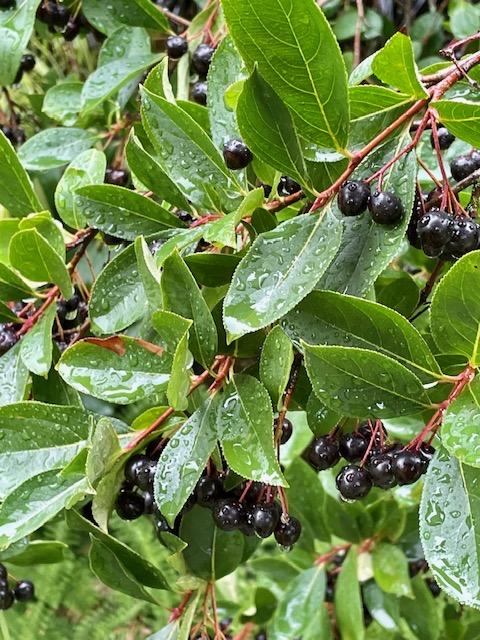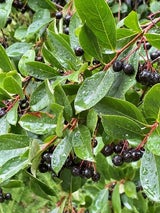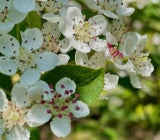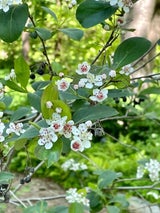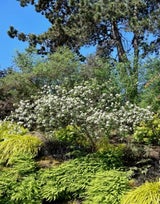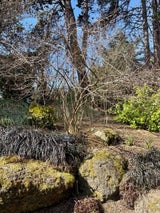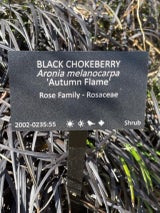- In the Garden
- >
- Gardens
- >
- Gardens E-H
- >
- Eastern North America Garden
- >
- Aronia melanocarpa
Aronia melanocarpa
Black chokeberry (Aronia melanocarpa) is a small North American native shrub with many attractive features. Its white flowers appear in late spring, contrasting with glossy, dark green leaves. Its foliage turns a vibrant red and orange in the fall.
But the best feature is in late summer when its striking black berries (pomes) hang in heavy clumps. They ripen early, wither soon, and either fall or persist. You can see in the pictures that our black chokeberries are persisting. The common name ‘chokeberry’ refers to the tart and bitter taste of the berries. They are edible but so astringent that they cause choking for most people trying them. There is no choking though when the berries are made into tasty jams and jellies.
And that’s not all. The fruit of black chokeberry has higher levels of antioxidants than any other temperate fruit. Black chokeberry attracts early butterflies, hummingbirds, and pollinators. They don’t worry about choking or nutrition. They just know what they need and where and when to get it.
Black chokeberries were esteemed by First Nations for their health-enhancing properties. For hundreds of years First Nations have used all parts of the plant for fighting diseases, increasing nutrition, curing meats, and as a dying agent. They pounded black chokeberries into buffalo, deer, and antelope meat to preserve it. When Lewis and Clark found out about this highly nutritious and lightweight food, they carried huge packs of aronia berry meat (pemmican) on their journey.
The pictures taken in the Black and Gold Garden are of the cultivar Aronia melanocarpa ‘Autumn Flame’. There is no information on this cultivar. It could be a variation on ‘Autumn Magic’, a UBC introduction. The nursery, now out of business, was also selling this cultivar when ‘Autumn Flame’ was bought by VanDusen. The flower picture with the old berries persisting is from the species plant (Aronia melanocarpa) in the Eastern North America Garden bed 16.
Text and photos by Hughie Jones
